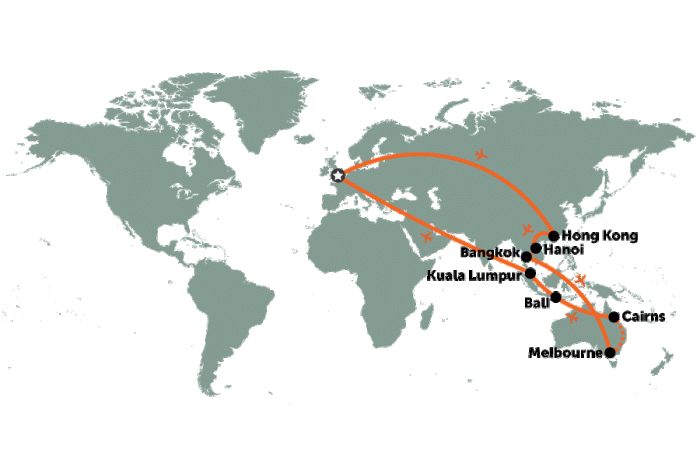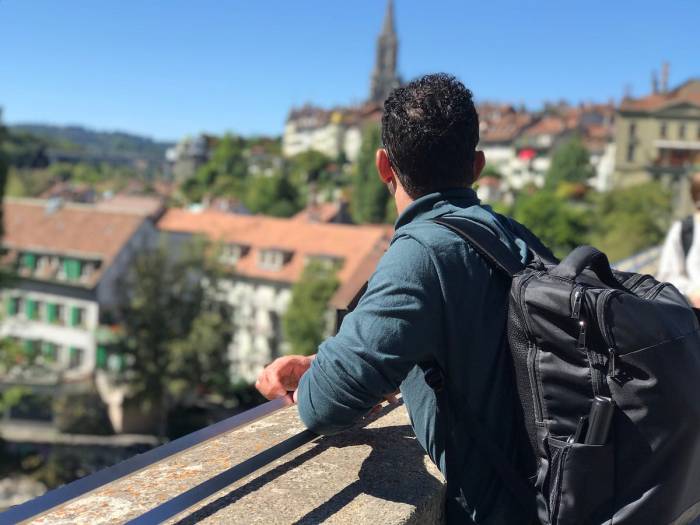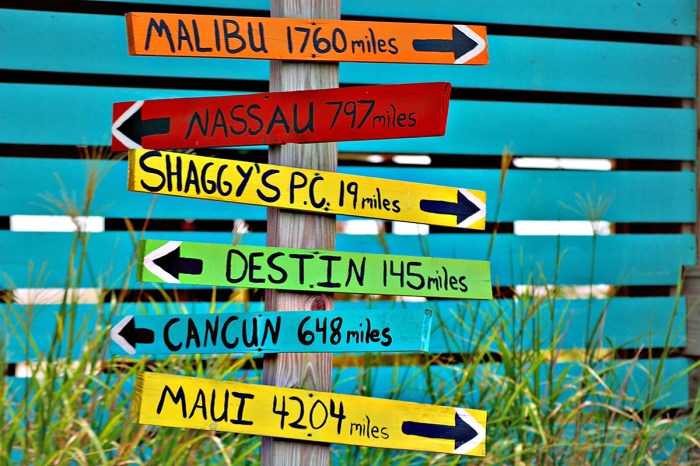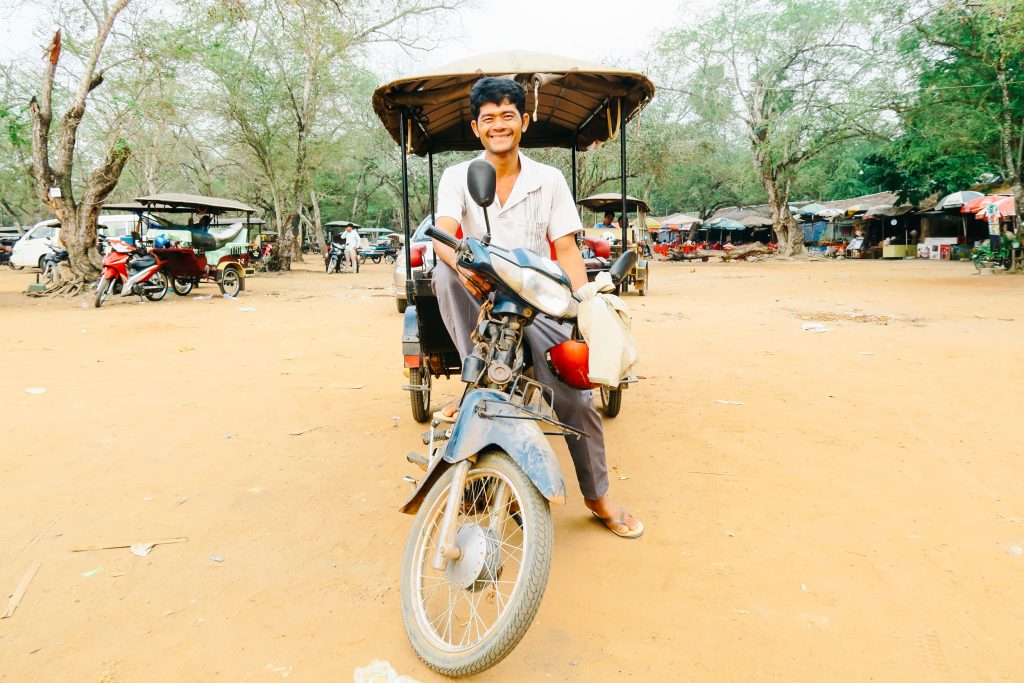Travel the world in 3 months? It’s a bold aspiration, but achievable with meticulous planning. This comprehensive guide delves into the practicalities, from crafting a realistic budget to selecting unforgettable destinations. Discover how to balance thrilling adventures with cultural immersion, ensuring your whirlwind journey is both enriching and memorable.
We’ll dissect the diverse facets of this ambitious endeavor, from the initial stages of defining your travel style to the crucial aspects of packing, safety, and accommodation. This detailed Artikel equips you with the knowledge to embark on a fulfilling and well-managed trip, maximizing your time and experience.
Defining the Journey

Source: pcdn.co
A three-month global odyssey presents a unique challenge and opportunity. It demands careful planning, a flexible mindset, and a deep understanding of the diverse travel experiences possible. This period allows for a whirlwind tour of the world or a more focused immersion in specific regions. The journey’s success hinges on understanding the different types of travel and the trade-offs involved.A three-month trip around the world is not simply a series of quick visits.
It necessitates a deliberate approach to defining the desired experience. This involves considering personal preferences and allocating time effectively to achieve meaningful engagement with various cultures and destinations.
Travel Styles and Experiences
Different travel styles cater to varied needs and budgets. Understanding these styles will enable a traveler to align their experience with their goals. Backpacking offers an affordable and immersive experience, whereas luxury travel prioritizes comfort and exclusivity. Cultural immersion, meanwhile, aims to deeply understand a culture through engagement with local people and customs.
Dreaming of traversing the globe in three months? Before you book those far-flung flights, consider exploring the fantastic hiking trails right in your own backyard. Finding captivating places to go hiking near me can be a fantastic starting point for planning adventures, whether it’s a weekend getaway or a longer trip. This exploration of local trails can help you discover hidden gems and build confidence for future global explorations.
Check out places to go hiking near me for inspiration, and soon you’ll be scaling mountains worldwide in your pursuit of global travel in three months.
Backpacking
Backpacking, a popular choice for budget-conscious travelers, involves staying in hostels, relying on public transportation, and embracing a simpler lifestyle. It often emphasizes experiencing local culture and interacting directly with communities. This style of travel provides an intimate connection with the destination, but often comes with less comfort and potential for safety concerns.
Luxury Travel
Luxury travel, often associated with higher budgets, focuses on comfort, exclusivity, and curated experiences. It may involve staying in five-star hotels, private transportation, and tailored itineraries. This approach often prioritizes relaxation and pampering, but may lead to a less immersive experience of local life.
While the allure of traveling the world in three months is undeniable, the journey often starts with something much closer to home. Exploring local trails, like those highlighted in trails around me , provides valuable experience and builds the confidence needed for longer expeditions. This groundwork is crucial for successfully navigating the logistical challenges of international travel and maximizing the experience of a trip around the globe.
Cultural Immersion
Cultural immersion is about deeply understanding a culture through active engagement. It involves learning local customs, interacting with locals, and experiencing the daily lives of the community. This style often necessitates longer stays in specific locations and a willingness to step outside of one’s comfort zone. It demands patience and an open mind, as it requires understanding local customs and social norms.
Comparing Travel Styles
| Style | Pros | Cons |
|---|---|---|
| Backpacking | Affordable, immersive, independent, great for meeting people | Potentially less comfortable, safety concerns, limited luxury |
| Luxury Travel | Comfort, curated experiences, high level of service, often hassle-free | Expensive, less opportunity for cultural immersion, can feel detached from local life |
| Cultural Immersion | Deep understanding of local culture, meaningful interactions with people, personal growth | Requires patience and flexibility, potentially more challenging logistics, may involve longer stays in one location |
Budget and Finances
Planning a three-month global adventure demands careful consideration of expenses. Budgeting effectively is crucial to ensuring a smooth and enjoyable journey. This section Artikels potential costs, presents budget-friendly and luxurious travel options, and provides a framework for creating a realistic budget, including a sample itinerary with estimated costs.
Potential Costs
The cost of a three-month trip varies significantly depending on the destinations chosen, travel style, and activity levels. Accommodation, transportation, food, activities, and visas all contribute to the overall expenditure. For instance, a trip to Southeast Asia, known for its affordability, will likely have lower costs compared to a journey through Western Europe, where prices for accommodations and activities are typically higher.
Conquering the globe in three months requires meticulous planning, and a crucial element is portable illumination. A high-quality led tent lighting system, like the one detailed in this helpful resource, here , is essential for comfortable and safe overnight stays. This, combined with a well-organized itinerary, will significantly enhance your chances of a successful, enriching global adventure.
Budget-Friendly and Luxurious Options
Budget-friendly travel can involve hostels, local transportation, street food, and free activities. Conversely, luxury travel often includes five-star hotels, private transportation, gourmet meals, and premium experiences. Finding a balance between these extremes allows for customization and enjoyment based on personal preferences.
Creating a Realistic Budget
A realistic budget incorporates estimated costs for various destinations and activities. This necessitates researching average prices for accommodation, flights, meals, attractions, and other expenses. Data from travel websites, forums, and past trip reports can be valuable in generating these estimates.
Sample Itinerary with Estimated Costs
| Day | Destination | Accommodation | Transportation | Activities | Estimated Cost ($) |
|---|---|---|---|---|---|
| 1-7 | Bangkok, Thailand | Hostel | Local trains, taxis | Temple visits, street food tours | $500 |
| 8-14 | Luang Prabang, Laos | Boutique guesthouse | Bus, motorbike rentals | Hiking, cultural tours | $700 |
| 15-21 | Hoi An, Vietnam | Boutique hotel | Domestic flights, local taxis | Ancient town exploration, cooking classes | $800 |
| 22-28 | Kyoto, Japan | Ryokan (traditional Japanese inn) | Bullet train, local buses | Cultural experiences, gardens, temples | $1200 |
| 29-30 | Osaka, Japan | Hotel | Bullet train, local transport | Shopping, food markets | $500 |
This sample itinerary provides a glimpse into the budgeting process. Detailed research for specific destinations is crucial for accurate cost estimations. Remember to factor in visa costs, travel insurance, and unforeseen expenses.
Destinations and Planning
Global travel is experiencing a surge in popularity, with many seeking immersive experiences beyond their home countries. A well-structured plan is crucial for maximizing enjoyment and minimizing stress during a three-month journey. This phase involves careful selection of destinations, crafting an itinerary, and managing logistical details.
Popular Destinations and Their Appeal
Popular destinations often draw visitors due to a combination of cultural attractions, natural beauty, and historical significance. Consider destinations like Southeast Asia, known for its vibrant culture, delicious cuisine, and stunning beaches. Europe, with its rich history and architectural marvels, remains a perennial favorite. South America offers a blend of diverse landscapes, from towering Andes mountains to Amazonian rainforests.
Each region holds unique appeal, catering to various interests.
Creating a Custom Itinerary, Travel the world in 3 months
A custom itinerary allows travelers to tailor their journey to specific interests. For example, a nature enthusiast might focus on national parks and wildlife reserves, while a history buff might prioritize historical sites and museums. Flexibility is key, as unforeseen circumstances can arise. Building in buffer time allows for spontaneous exploration and unexpected discoveries.
Choosing Destinations Based on Travel Style, Budget, and Interests
Effective destination selection hinges on aligning travel style, budget, and personal interests. Budget-conscious travelers might prioritize destinations with affordable accommodations and transportation options. Adventure seekers might gravitate towards destinations offering outdoor activities. Foodies might focus on regions known for their culinary traditions.
Unique Destinations and Key Attractions
Careful consideration of destinations should involve an understanding of their unique attractions. This list showcases diverse options:
- Iceland: Volcanic landscapes, geothermal areas, and Northern Lights offer stunning natural beauty. Experiencing the midnight sun during summer is a remarkable highlight.
- Morocco: Explore ancient cities, vibrant souks, and the Atlas Mountains. Experience the rich culture and hospitality of this North African nation.
- Peru: Discover the lost city of Machu Picchu, explore the Amazon rainforest, and experience the diverse Andean culture. Adventure and history intertwine in this South American gem.
- Japan: Immerse yourself in ancient temples, vibrant cities, and traditional arts. Experience the unique blend of modernity and tradition in this island nation.
- Tanzania: Witness the Great Migration, spot wildlife in national parks, and experience the thrill of climbing Mount Kilimanjaro. Wildlife enthusiasts will be captivated by the diverse ecosystem.
- New Zealand: Experience stunning landscapes, from towering mountains to pristine beaches. Hiking, kayaking, and exploring glaciers provide exhilarating adventures.
- Vietnam: Explore ancient temples, vibrant cities, and stunning coastlines. Enjoy delicious cuisine and rich culture in this Southeast Asian nation.
- Greece: Explore ancient ruins, beautiful islands, and delicious Mediterranean cuisine. Sail the Aegean Sea, and uncover historical sites that date back millennia.
- Costa Rica: Experience lush rainforests, diverse wildlife, and stunning beaches. Wildlife viewing and eco-tourism opportunities abound in this Central American country.
- Colombia: Explore vibrant cities, diverse landscapes, and rich culture. Experience the Andes Mountains, explore the Amazon rainforest, and indulge in the local cuisine.
Practical Considerations
Global travel, especially a three-month expedition, demands meticulous planning beyond destination selection and budget allocation. Successful journeys hinge on navigating practicalities like securing necessary documents, packing efficiently, and prioritizing safety. This phase ensures a smooth and enriching experience, allowing you to fully immerse yourself in your chosen destinations.Efficiently managing these aspects minimizes stress and maximizes the enjoyment of your journey.
Understanding the specific requirements for each location, along with meticulous preparation, contributes to a positive and memorable experience.
Essential Documents
Thorough documentation is crucial for a seamless international journey. This involves not only visas but also comprehensive travel insurance. The need for specific documents varies greatly depending on your nationality and the countries you intend to visit.
- Visas: Verify visa requirements for each country you plan to visit well in advance. This process often involves online applications, document submissions, and potential interviews. Delays in obtaining visas can disrupt your travel plans, so early action is essential.
- Travel Insurance: Comprehensive travel insurance is indispensable. It covers medical emergencies, lost belongings, trip cancellations, and other unforeseen circumstances. The policy should offer sufficient coverage for your planned duration and potential activities.
- Passport: Ensure your passport has a validity period extending beyond your travel dates. Check the specific requirements for passport validity in each country you intend to visit, as it can vary.
- Other Documents: Depending on your itinerary, other documents might be required, such as vaccination certificates, driver’s licenses, or international driving permits.
Packing Light
Efficient packing is vital for a smooth 3-month journey. Overpacking leads to unnecessary weight, difficulty navigating crowded transportation systems, and potential baggage loss.
- Strategic Selection: Choose versatile clothing items that can be mixed and matched. Focus on lightweight, quick-drying fabrics. Consider packing layers for varying weather conditions.
- Minimizing Accessories: Prioritize essential accessories and minimize unnecessary items. Think about whether each item truly enhances your experience or is just clutter.
- Roll, Don’t Fold: Rolling clothes instead of folding them saves space and reduces wrinkles. Utilize packing cubes for better organization.
- Packing List: Create a detailed packing list and meticulously check off items as you pack. This method minimizes the chance of forgetting crucial items.
Travel Safety and Security
Prioritizing safety is paramount for a positive travel experience. Awareness of potential risks and implementing preventive measures significantly reduces the chances of negative incidents.
- Research Destinations: Understand local laws, customs, and potential safety concerns before visiting a new place. Research the political climate, safety reports, and local laws.
- Inform Someone: Share your itinerary with a trusted contact person, providing details of your accommodation, planned activities, and contact information.
- Financial Security: Avoid carrying large sums of cash and utilize secure payment methods. Inform your bank about your travel plans to avoid account lockouts.
- Emergency Contacts: Ensure you have access to emergency contacts, including local authorities, embassies, and insurance providers.
Essential Documents, Packing Tips, and Safety Measures
| Category | Details | Tips | Examples |
|---|---|---|---|
| Essential Documents | Visas, travel insurance, passport, and other required documents | Check requirements well in advance. | Visas for Schengen countries, comprehensive travel insurance, valid passport, vaccination certificates. |
| Packing Tips | Choose versatile clothing, minimize accessories, roll clothes, use packing cubes | Focus on functionality and versatility. | Lightweight, quick-drying fabrics, versatile tops and bottoms, packing cubes for organization. |
| Travel Safety | Research destinations, inform someone about your plans, maintain financial security, have emergency contacts | Prioritize safety measures over comfort. | Local laws, customs, and safety reports, emergency contacts (family/friends), secure payment methods, local authorities. |
Itinerary and Scheduling
Crafting a compelling 3-month travel itinerary demands meticulous planning. A well-structured itinerary not only maximizes your time but also ensures a smoother journey, allowing for spontaneous detours and unforeseen circumstances. It’s about balancing the allure of iconic landmarks with the serenity of quiet moments. This involves thoughtful scheduling, incorporating both structured activities and ample relaxation.
Optimizing Your 3-Month Itinerary
A 3-month journey offers unparalleled flexibility. A well-designed itinerary should adapt to the ebb and flow of your experiences. Avoid over-scheduling, allowing for unexpected opportunities and unplanned discoveries. This adaptability is key to a rewarding travel experience. Over-scheduling often leads to rushed experiences, missing out on the finer details that make a trip memorable.
Conquering the globe in three months is a bold aspiration, requiring meticulous planning and resourcefulness. This ambitious journey necessitates a deep understanding of the Travel industry’s nuances, from booking flights and accommodations to navigating local customs and regulations. Careful consideration of potential challenges, combined with a flexible approach, is key to a successful experience. Ultimately, a well-structured strategy is crucial to truly making the most of this fast-paced global adventure.
Prioritize experiences over ticking boxes.
Creating a Flexible Itinerary
Unforeseen circumstances are inevitable. Flexibility is paramount. Build buffer time into your schedule, allowing for delays, unexpected attractions, or simply downtime to recharge. Buffer time isn’t just about allowing for delays; it also allows for spontaneity and unexpected discoveries. Consider alternate routes or activities in case of unforeseen challenges.
A flexible itinerary allows you to embrace the unexpected and adjust to changing conditions without compromising the overall journey.
Balancing Sightseeing with Relaxation
An effective itinerary harmonizes sightseeing with relaxation. Allocate specific days for focused exploration, ensuring you can truly immerse yourself in each destination. Equally important are designated relaxation days, allowing your body and mind to recover. This approach ensures you are fully present and engaged during sightseeing and maximizes enjoyment. The key is not just visiting places but also experiencing them.
Don’t feel obligated to cram every possible activity into your schedule.
Sample 3-Month Itinerary
| Day | Location | Activity | Notes |
|---|---|---|---|
| 1-3 | Paris, France | Arrival, sightseeing (Eiffel Tower, Louvre), local cuisine | Adjust arrival time based on flight schedule |
| 4-7 | Amsterdam, Netherlands | Canal cruise, museums (Rijksmuseum), cycling | Consider a day trip to nearby cities |
| 8-10 | Berlin, Germany | Historical sites (Brandenburg Gate, Reichstag), museums, exploring local markets | Allow for potential delays in train travel |
| 11-14 | Prague, Czech Republic | Historical sites, Charles Bridge, local beer, relaxing in parks | Possible delays at border crossings |
| 15-18 | Budapest, Hungary | Thermal baths, Buda Castle, Danube River cruise, exploring local markets | Consider a cooking class or wine tasting experience |
| 19-21 | Vienna, Austria | Imperial Palace, Schönbrunn Palace, classical music concert | Allow for potential travel time between cities |
| 22-25 | Rome, Italy | Colosseum, Vatican City, Roman Forum, pasta-making class | Consider a day trip to Pompeii or Florence |
| 26-28 | Florence, Italy | Renaissance art, Uffizi Gallery, Ponte Vecchio, leather market | Explore local neighborhoods and cafes |
| 29-30 | Travel to home country | Departure | Confirm flight details and travel arrangements |
Accommodation and Transportation
Global travel is undergoing a transformation, driven by technological advancements and evolving traveler preferences. Finding the right balance between comfort, cost, and experience is crucial. This section explores the spectrum of accommodation and transportation options, enabling informed choices for an optimized journey.
Accommodation Options
Accommodation choices significantly impact the travel experience. Understanding the pros and cons of different options is key to making the right decision.
- Hostels: Hostels offer budget-friendly lodging, often with shared rooms and common areas. They are popular with solo travelers and budget-conscious groups. Pros include social interaction, cost-effectiveness, and often a vibrant atmosphere. Cons include potential for noise, limited privacy, and varying cleanliness standards. Consider hostels in areas with lively nightlife or social activities for maximum benefit.
- Hotels: Hotels provide a range of amenities and services, from basic rooms to luxurious suites. Pros include convenience, privacy, and typically consistent quality. Cons include higher costs compared to hostels or Airbnb, and sometimes a less personal experience.
- Airbnb: Airbnb offers a diverse range of accommodations, from apartments to entire houses, often with unique local experiences. Pros include potential for more space and privacy, a local feel, and often a kitchen for self-catering. Cons include varying quality control, potential for less-than-stellar amenities, and the necessity to coordinate with hosts.
Transportation Methods
Choosing the right transportation method is crucial for a smooth and efficient trip. Different options cater to various needs, from speed and cost to comfort and flexibility.
| Mode | Cost | Time | Pros/Cons |
|---|---|---|---|
| Flights | Variable (depending on route and time of booking) | Generally fastest | Pros: Speed, convenience. Cons: Can be expensive, potential for delays, limited flexibility. |
| Trains | Variable (depending on route and class) | Slower than flights, but often faster than buses | Pros: Scenic routes, often comfortable. Cons: Can be expensive on some routes, potential for delays. |
| Buses | Generally most affordable | Slowest | Pros: Cost-effective, often flexible routes. Cons: Time-consuming, can be uncomfortable. |
| Ferries | Variable (depending on route and class) | Variable (depending on route and distance) | Pros: Unique experience, scenic routes. Cons: Time-consuming, limited availability. |
| Ride-sharing services (e.g., Uber, Lyft) | Variable (depending on distance and time) | Variable | Pros: Convenient, flexibility, often affordable for short distances. Cons: Can be expensive for long distances, unpredictable pricing. |
Efficient travel planning often involves a combination of transportation methods. For example, a traveler might fly to a major city, then use trains or buses to explore the surrounding areas.
Experiences and Activities

Source: amazonaws.com
Embarking on a three-month global adventure demands more than just ticking off destinations; it necessitates forging genuine connections with the world around you. This phase focuses on enriching your travel experience through immersion in local cultures, unique activities, and unforgettable moments. This section details the nuances of crafting a journey that transcends mere sightseeing, transforming it into a deeply personal and enriching odyssey.To truly savor the essence of each location, prioritize experiences that go beyond the typical tourist trail.
Seek out opportunities to interact with locals, participate in traditional ceremonies, and immerse yourself in the daily rhythms of life. This fosters a profound understanding and appreciation for the diverse tapestry of human experience.
Unique Cultural Experiences
A key component of a fulfilling global adventure is engaging with the rich tapestry of cultural experiences. These experiences can vary from attending local festivals to participating in hands-on workshops. Consider the local traditions, customs, and ceremonies that each destination offers. The more you immerse yourself, the more your trip will resonate.
- Southeast Asia: Participate in a traditional Thai cooking class, experience a captivating dance performance, or delve into the spiritual world of a local temple. This region offers an explosion of color, culture, and flavors.
- South America: Witness the vibrant energy of a local market, learn to salsa dance, or take a guided hike through the Andes mountains. These experiences provide a window into the rich cultural heritage of the region.
- Europe: Attend a classical music concert in a historic cathedral, explore a local vineyard, or take a cooking class focused on regional specialties. Europe offers a wealth of artistic and historical experiences.
Activities to Immerse in Local Culture
Engaging in local activities is crucial for a meaningful experience. This approach goes beyond the typical tourist traps and allows travelers to witness life as it unfolds naturally.
- Volunteer opportunities: Consider volunteering at a local orphanage or animal shelter. This offers a unique perspective on the community and allows you to contribute to a worthwhile cause. This demonstrates a genuine interest in the well-being of the community.
- Language exchange: Engage in language exchange programs to connect with locals and learn about their perspectives. This fosters a deeper understanding of the culture and allows for authentic interaction.
- Local markets: Explore local markets for an authentic glimpse into the local economy. Negotiating prices, sampling local delicacies, and engaging with vendors provides a richer understanding of daily life.
Specific Regional Activities
To tailor your experiences, consider the specific activities and events in each region. This could involve attending a local festival, participating in a guided tour, or engaging in hands-on workshops.
- South Africa: Visit a local township, attend a traditional dance performance, or explore the historical sites of the region. These experiences offer a rich understanding of the country’s unique heritage.
- Japan: Attend a tea ceremony, visit a traditional temple, or participate in a calligraphy workshop. These experiences reveal the profound cultural significance of Japan.
- Peru: Hike the Inca Trail, explore Machu Picchu, or attend a traditional Andean festival. This offers the opportunity to engage with the rich history and heritage of the region.
Cultural Sensitivity
Global travel offers unparalleled opportunities for personal growth and cultural exchange, but it also demands respect for diverse traditions and customs. A journey enriched by cultural sensitivity is one that fosters genuine understanding and meaningful connections with the local communities. This entails more than just observing; it necessitates active participation and a genuine curiosity to learn and adapt.Understanding different cultures requires a proactive approach.
It’s not merely about avoiding faux pas but about actively seeking to comprehend and appreciate the nuances of each society. This proactive stance fosters meaningful interactions and prevents unintentional misunderstandings. Respectful engagement is a two-way street; it involves both acknowledging and adapting to local norms while also demonstrating an openness to learning from those around you.
Importance of Cultural Sensitivity
Respecting local customs fosters mutual understanding and appreciation between travelers and the host community. It builds trust and rapport, leading to more enriching and authentic experiences. Moreover, demonstrating cultural sensitivity reduces the likelihood of conflicts or misunderstandings, creating a positive impact on both the traveler and the local community. This positive interaction contributes to a more harmonious and productive exchange.
Practical Tips for Respectful Interactions
Careful observation and thoughtful consideration are crucial. Before traveling, research the local customs and etiquette of your destinations. Learn basic greetings and phrases in the local language, as simple gestures of respect go a long way. Dress modestly when visiting religious sites or cultural centers. Be mindful of personal space and physical contact norms, which vary significantly across cultures.
Be attentive to nonverbal cues and adapt your behavior accordingly.
Examples of Cultural Etiquette in Different Countries
| Country | Cultural Etiquette |
|---|---|
| Japan | Removing shoes before entering homes and certain public spaces is essential. Bowing is a common greeting and sign of respect. Avoid using chopsticks to pick up food, and be mindful of table manners. |
| Thailand | Showing respect to elders is highly valued. Always use both hands when accepting gifts. Avoid touching someone’s head, as it is considered disrespectful in some cultures. Modest dress is often expected when visiting temples. |
| India | Removing your shoes before entering a home is common. Namaste is a respectful greeting. Be mindful of caste systems and avoid making generalizations. Dietary restrictions should be respected. |
Learning Basic Local Phrases
Learning basic phrases in the local language significantly enhances interactions and demonstrates respect. This effort goes beyond superficial gestures and actively shows genuine interest in the culture. It can lead to more meaningful conversations and opportunities for deeper connections with locals. Simple phrases like “hello,” “thank you,” “please,” and “excuse me” can greatly facilitate communication.
“Learning a few basic phrases in the local language can significantly enhance your experience and show respect for the local culture.”
Illustrations and Visualizations: Travel The World In 3 Months
A well-designed visual representation is crucial for a successful 3-month global journey. Effective visualizations transform complex itineraries into easily digestible, engaging narratives, enhancing the overall travel experience and inspiring others. A comprehensive approach ensures that the journey’s essence is conveyed effectively.Visualizations, whether maps, illustrations, or images, serve as powerful tools for planning, budgeting, and communicating the journey’s key aspects.
They provide a concrete framework for understanding the scope of the trip and its different components. This approach not only aids in planning but also helps in engaging others in the adventure.
Creating a Visual Itinerary Map
Visualizing the journey geographically is essential. A detailed map depicting the routes and destinations is vital for planning and tracking progress. This map should clearly indicate the locations visited, the distances between them, and the approximate duration of travel between destinations. The map should also visually differentiate different phases of the trip, such as city exploration, cultural immersion, or nature excursions.
Consider using different colors to represent distinct travel phases or destinations. This will create a visually appealing and easily understandable overview of the itinerary. For example, a specific color could highlight the coastal areas visited, while another highlights the mountainous regions.
Illustrating Activities and Experiences
A series of illustrations depicting the planned activities and experiences is a great way to evoke the journey’s essence. These illustrations can include sketches or simple drawings illustrating the specific activities, creating a visually engaging narrative. For example, an illustration could depict a vibrant market scene, showcasing the energy and diversity of a particular location. Alternatively, a sketch of a traditional dance performance can illustrate the cultural immersion aspect of the trip.
Illustrating Travel Aspects
Visual representations of travel elements enhance the overall narrative. Visualizing the transportation methods used, from high-speed trains to local buses, provides a tangible sense of the journey’s logistical aspects. For instance, an image of a bustling train station can convey the energy and excitement of a journey. Similarly, depictions of the accommodation types visited, whether a cozy guesthouse or a luxurious hotel, offer a glimpse into the experience’s nuances.
Image Descriptions
Thorough descriptions accompanying the illustrations and images add depth to the visualization process. These descriptions should not just identify the location or activity but should also provide context and details. For example, a description of a vibrant street market should include details about the unique local crafts and the friendly interactions with vendors. Alternatively, a description of a bustling airport scene could highlight the excitement of international travel and the sense of anticipation.
These details help bring the visual representations to life, making the journey more relatable and appealing.
Ultimate Conclusion

Source: co.uk
Conquering the globe in three months demands careful consideration of your budget, desired experiences, and practicalities. This guide has equipped you with the essential tools to transform your dream into a reality. Remember, meticulous planning, a flexible itinerary, and an open heart are key ingredients for a truly unforgettable experience. Embrace the adventure, embrace the unknown, and make the most of your whirlwind global tour.
Question & Answer Hub
How much does it cost to travel the world in 3 months?
The cost varies significantly depending on your travel style, destinations, and spending habits. Luxury travel will obviously be more expensive than budget backpacking. Thorough research and budgeting are crucial for determining realistic expectations.
What are some essential documents I need to travel internationally?
Essential documents include a valid passport, visa(s) if required, travel insurance, and any necessary health certificates. Always double-check specific requirements for your intended destinations.
How can I balance sightseeing with relaxation on a 3-month trip?
A flexible itinerary is key. Incorporate downtime into your schedule for rest and rejuvenation. Allocate specific days for relaxation, and consider activities that combine sightseeing with local experiences.
What are some tips for packing light for a 3-month trip?
Pack versatile clothing items that can be mixed and matched. Consider investing in high-quality, durable luggage and travel accessories. Choose lightweight, multi-functional items to minimize weight and maximize space.





